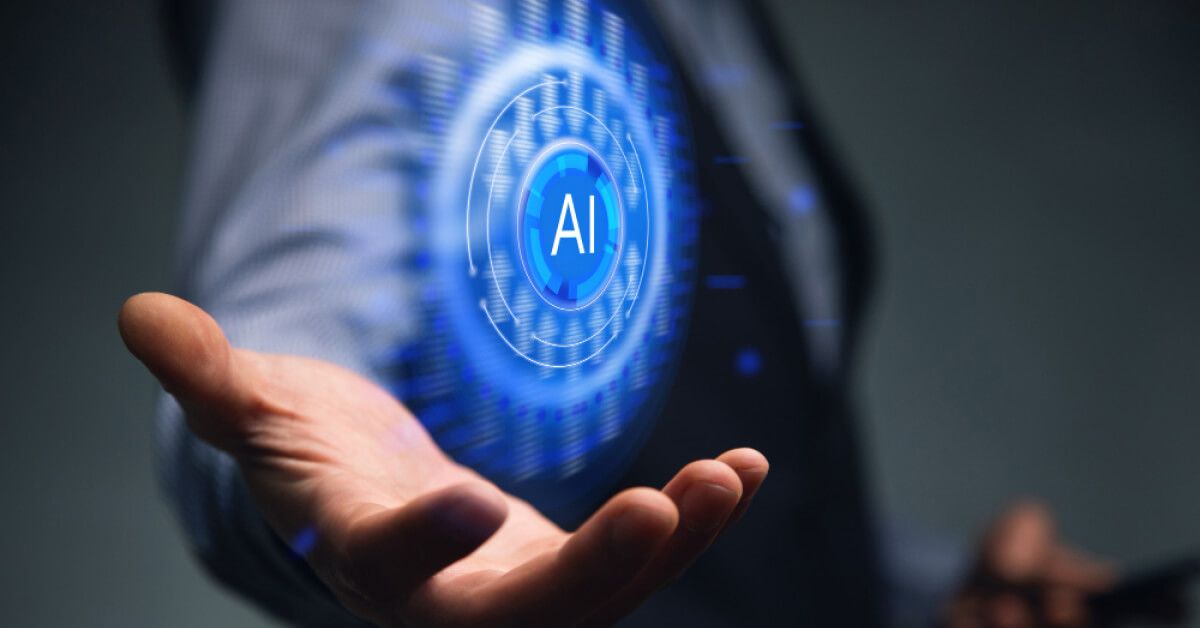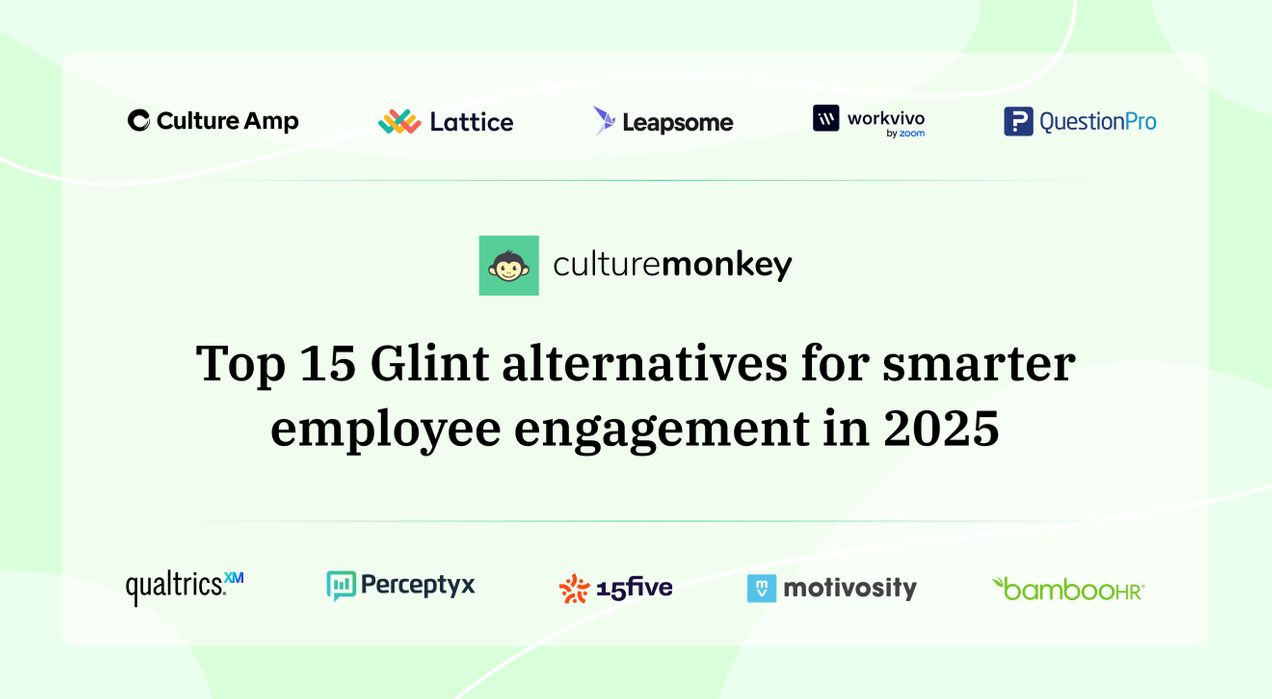The rise of employee listening software and what HR leaders need to know

Tuning a guitar by ear may work once or twice, but over time, even the best musicians rely on a tuner to catch the subtle notes they might miss. Why? Because what sounds “close enough” can actually be off-key without you realizing it.
Employee listening software works the same way for organizations. It helps leaders tune into the real voices, emotions, and concerns of their workforce, clearly and consistently. Instead of guessing how employees feel or relying on assumptions, it gives you accurate, real-time feedback to adjust your leadership, processes, and culture before things go out of harmony.
It’s not just about collecting opinions—it’s about truly hearing what’s being said and responding with intention. With the right listening tools, you can build a workplace that feels heard, valued, and in sync.
TL;DR
What is employee listening software, and why does it matter?

TL;DR
Employee listening software centralizes surveys, pulse checks, and sentiment tracking into one platform, providing real-time, actionable insights. It replaces fragmented feedback tools and connects seamlessly with HR systems.
By surfacing trends early and enabling timely action, it builds trust, improves engagement, and reduces attrition. Employees feel valued when their feedback drives meaningful, visible change across the organization.
Employee listening software is a digital solution that helps organizations capture, analyze, and act on employee feedback at scale, promoting overall employee health and well-being. Unlike traditional surveys, it uses AI, sentiment analysis, and real-time data to give HR and leadership a clearer understanding of employee experiences, needs, and concerns, turning raw input into timely, actionable insights.
- Helps you understand your workforce in real-time: Gone are the days of waiting weeks for survey results. Employee listening software enables continuous feedback so you can respond to concerns as they surface, not after they’ve snowballed into attrition risks.
- Replaces fragmented feedback tools: Instead of juggling spreadsheets, emails, and survey platforms, this software centralizes everything, making it easier to manage, track, and analyze feedback without losing context or time.
- Integrates with your 360-degree feedback platform: Most modern HR tools seamlessly plug into your existing 360-degree feedback platform and HR stack, giving you a unified view of feedback, performance, and engagement across touchpoints.
- Goes beyond just surveys: While it includes employee surveys software, it also taps into channels like pulse checks, anonymous comments, and sentiment tracking, making feedback collection feel natural, not forced.
- Supports better decision-making for HR: By using predictive analytics and dashboards, HR listening software empowers leaders to prioritize interventions based on real data, not assumptions or hearsay.
- Boosts engagement and retention: When employees feel heard and see action taken, they’re more likely to stay. Listening software helps bridge the gap between feedback and meaningful change, turning insights into a real employee solution.
7 Signs your organization needs a smarter feedback system

If your current employee feedback process feels like yelling into the void — or worse, a never-ending loop of “We’ll look into it” — it’s time to reevaluate and implement multiple listening channels for better feedback collection. A smarter feedback system doesn’t just collect opinions; it turns them into insight and action.
Here are 7 warning signs your setup might be overdue for an upgrade.
- You’re still relying on annual surveys: Annual engagement surveys are like checking your car’s oil once a year, too late to catch small issues before they turn into big problems. You need employee survey software that listens continuously, not just during review season.
- Feedback feels like a black hole: If employees say, “Nothing ever comes from what we share,” it means your system lacks transparency and follow-through. A smarter setup ensures feedback flows both ways, not just up.
- Managers struggle to interpret feedback: Without the right tools, raw feedback becomes noise. Smart systems apply employee sentiment analysis software to decode emotion and urgency, helping managers focus on what actually matters.
- You’re not tracking feedback trends over time: Seeing feedback once is useful. Tracking it across time and teams? Game-changing. A modern employee listening strategy connects dots and uncovers patterns you didn’t know existed.
- You can’t slice data by teams or demographics: If you can’t break down feedback by role, location, or department, you’re flying blind. A smarter system lets you filter, compare, and zoom in where needed, giving clarity to your employee engagement survey vendors.
- Pulse checks are inconsistent or missing: Pulse surveys help understand your workforce in real-time, but if they’re sporadic or manually managed, they lose impact. Automation and AI ensure regular, relevant check-ins.
- You’re losing people without knowing why: Attrition without explanation is a red flag. A lack of effective employee feedback tools often means you’re missing early warning signs. Smarter systems provide a feedback loop that’s proactive, not reactive.
The difference between listening and managing feedback

Collecting feedback is one thing, acting on it is another. Many organizations believe they’re “listening” because surveys go out regularly. But unless that feedback is analyzed, prioritized, and followed up with meaningful action, you're just managing data, not people.
Here’s how true listening differs from just managing feedback:
| Listening | Managing feedback | |
|---|---|---|
| Involves continuous two-way communication with employees | Often limited to periodic surveys and one-way data collection | |
| Prioritizes employee emotions, context, and sentiment | Focuses on numbers, charts, and completion rates | |
| Uses AI to detect trends and predict risks | Stores feedback in dashboards with limited real-time value | |
| Feedback leads to visible action and communication loops | Feedback is collected but rarely closed with a response or update | |
| Customizes touchpoints across lifecycle stages (onboarding, exit, etc.) | Applies the same feedback cycle to all employees | |
| Empowers employees to speak up anonymously and frequently | Relies on formal channels that feel rigid or performative | |
| Integrated into a broader employee listening strategy | Treated as a task or compliance requirement by HR |
The science behind the employee listening strategy

TL;DR
Effective listening strategies use psychology, data, and behavioral science to foster honest, safe feedback through anonymity, timing, and tone. NLP and machine learning reveal hidden emotions and patterns.
Follow-through reinforces trust and motivation, ensuring feedback loops feel meaningful. This systematic approach uncovers risks, predicts trends, and integrates listening into the employee experience at every stage.
An effective employee listening strategy is rooted in behavioral science, organizational psychology, and data analytics. It’s not about sending more surveys; it’s about when, how, and why you ask for feedback and what you do with it after. Listening becomes meaningful when it’s systematic, responsive, and embedded into the employee experience, especially during organizational changes.
Science tells us that employees are more likely to be honest and proactive when they feel psychologically safe. This means timing, tone, and anonymity all matter. That’s why today’s employee listening software uses natural language processing (NLP) and employee sentiment analysis software to decode unspoken emotions behind responses, not just the words themselves.
Pattern recognition also plays a major role. With the help of machine learning, systems can identify hidden themes, predict attrition risks, and track how engagement changes over time. This goes beyond gut instinct — it offers valuable insights and data-backed insights into what’s affecting morale, productivity, or retention.
Finally, neuroscience supports the importance of follow-through. When people see that their feedback leads to action, the reward centers in the brain light up. It reinforces trust. Without that loop, motivation drops. A well-crafted listening strategy doesn’t just measure how people feel — it helps organizations discover and understand their workforce in real time, turning insight into impact.
AI up-level: How gen-AI turns raw feedback into predictive insights
TL;DR
Generative AI organizes unstructured comments, analyzes sentiment, and highlights emerging risks before they escalate. It groups open-text feedback into clear themes and suggests next steps for managers.
By integrating with HR dashboards and creating digestible reports, it transforms raw data into foresight, enabling HR and managers to act faster and smarter on employee concerns.
Collecting feedback is step one, but decoding what it really means and where it’s headed. That’s where Generative AI steps in. Gen-AI doesn’t just organize responses; it learns from them, finds patterns, and helps HR teams act smarter, faster, and more confidently.
Here’s how it turns messy input into strategic foresight.
- Extracts themes from unstructured responses: Open-text feedback is a goldmine, but it's hard to sift through manually. Gen-AI scans thousands of comments and groups them into themes — like leadership issues, burnout, or team morale — giving structure to the chaos in your employee solution.
- Gauges emotion through sentiment analysis: Using employee sentiment analysis software, Gen-AI deciphers tone, urgency, and emotional cues. This means you don’t just know what employees said — you understand how they felt when they said it.
- Predicts engagement dips before they happen: By identifying subtle changes in language or survey scores, Gen-AI flags potential issues before they escalate. Whether it’s a spike in negative sentiment or a silent team, it helps you understand your workforce in real-time.
- Personalizes recommendations for managers: Gen-AI doesn’t just detect problems — it suggests solutions. From one-on-one check-ins to team-wide action plans, the software offers tailored responses so managers don’t have to guess their next move.
- Integrates seamlessly with 360 assessment software: Gen-AI can enhance insights from your 360 assessment software, providing context to performance reviews and surfacing feedback trends across peer reviews, upward feedback, and self-assessments.
- Transforms data into visual, digestible reports: No more drowning in spreadsheets. Gen-AI creates easy-to-read dashboards and summaries, making it simpler for leaders and employee engagement survey vendors to share insights, spot patterns, and drive focused change.
How do AI-driven insights help you listen and understand your people better?

TL;DR
AI interprets nuance, tone, and context, connecting feedback across surveys, exit interviews, and comments into a unified view. It adapts in real time as new data arrives.
By reducing bias and pinpointing drivers of sentiment, AI delivers precise, actionable insights. This helps leaders address root causes effectively and personalize actions to improve morale and retention.
AI doesn’t just collect feedback — it sharpens your lens on what matters most. With the help of machine learning, NLP, and predictive models, AI transforms surface-level data into a deeper understanding. Here’s how it strengthens your ability to truly connect with and respond to your workforce:
Listens beyond keywords
AI-powered HR listening software goes beyond counting buzzwords in surveys. It understands nuance, context, and emotional tone — helping you recognize when “I’m fine” actually means “I’m overwhelmed.”
Connect the dots across feedback channels
From exit interviews to engagement surveys to anonymous comments, AI unifies all inputs. It helps employee survey software paint a complete picture by identifying cross-platform trends and blind spots.
Adapts in real-time
As new feedback flows in, AI models continuously evolve, letting you understand your workforce in real-time rather than waiting weeks for static reports or analysis.
Reduces bias in interpretation
AI removes subjective guesswork. Instead of relying on gut instinct or managerial assumptions, AI offers an objective, data-backed analysis that keeps decisions fair and grounded.
Reveals hidden sentiment drivers
With employee sentiment analysis software, AI pinpoints which factors are fueling dissatisfaction or praise, whether it’s communication gaps, recognition issues, or workload concerns.
Makes the action more precise and personalized
AI doesn’t just highlight issues — it recommends the next steps. Whether you’re a frontline manager or CHRO, it delivers insights tailored to your team structure, feedback patterns, and historical outcomes, turning your employee listening strategy into something actionable and targeted for continuous improvement.
5 Ways employee listening leads to meaningful action
Listening to employees isn’t about collecting opinions for the sake of it — it’s about creating momentum. When feedback loops are structured, analyzed, and followed up with action, they create trust, clarity, and cultural alignment. Here are five ways employee listening software translates feedback into real change.
- Highlights what matters most to employees: Not all feedback carries the same weight. AI-powered tools help filter noise from true signals, so HR can focus on high-impact issues. Whether it’s burnout, leadership trust, or remote policy concerns, the system helps surface priorities that matter.
- Uncovers systemic issues across departments: When multiple teams voice similar frustrations, that’s not a coincidence — it’s a pattern. Listening tools map these across org charts, enabling HR to take cross-functional action rather than address issues in silos.
- Empowers managers to take ownership: By integrating data-backed insights into 360 feedback platforms and dashboards, managers can respond in real-time with contextual action plans. This transforms feedback from “someone else’s job” into direct, team-level responsibility.
- Drives initiatives that resonate: Too often, HR rolls out initiatives based on assumptions. Listening data reveals what employees actually want — whether it's career growth, better recognition, or flexible hours — helping teams create initiatives that stick.
- Helps measure the ROI of HR programs: You can’t manage what you don’t measure. Listening platforms show how sentiment shifts before and after key initiatives, offering clear ROI on programs like leadership training, DEI efforts, or wellness support.
How CultureMonkey guides you to centralize employee sentiment and engagement in one platform?
TL;DR
CultureMonkey combines surveys, sentiment analysis, and AI insights into a scalable, global-ready platform. It simplifies listening with pre-built templates and manager-specific dashboards.
By decoding emotions and surfacing engagement drivers, it empowers HR and managers to act decisively. Localization and automation ensure consistent feedback experiences, making it a true solution for cultural alignment.
Managing surveys in one tool, sentiment in another, and engagement somewhere else? That’s not scalable. CultureMonkey brings all these moving parts under one roof so HR teams can stop chasing data and start using it.
Here’s how it creates a truly centralized listening experience.
1. CultureMonkey offers dynamic employee survey scheduling and templates
You can launch pulse checks, lifecycle surveys, or full-scale engagement assessments with pre-built templates. CultureMonkey makes sure feedback collection is fast, consistent, and tailored to every stage of the employee journey.
2. Built-in sentiment analysis decodes emotional tone in real-time
No need to manually interpret thousands of comments. With employee sentiment analysis software built into the platform, CultureMonkey identifies mood trends, urgency levels, and emotional triggers across feedback channels instantly.
3. AI-generated insights connect feedback to engagement drivers
The platform analyzes results with the help of AI and maps them to areas like recognition, leadership, or communication. This helps HR teams quickly understand what’s working — and what’s not.
4. Manager-specific dashboards personalize action plans
CultureMonkey doesn’t just serve leadership. Managers get custom dashboards that combine feedback data with performance insights, empowering them to take ownership without feeling overwhelmed.
5. Global-ready features support multinational teams effortlessly
From language localization to timezone-based survey triggers, CultureMonkey is designed to scale. It meets the needs of a distributed workforce, proving it's not just an HR listening software — it’s a true solution for global engagement.
Conclusion
Employee listening isn’t just about gathering feedback — it’s about making sense of it, acting on it, and closing the loop in real time. With today’s dispersed teams and evolving work expectations, relying on outdated methods won’t cut it.
HR leaders need smarter, AI-driven solutions that combine feedback, sentiment, and engagement insights in one cohesive system. From spotting hidden trends to empowering managers, the right approach turns employee voices into strategy.
If you're ready to go beyond surveys and actually understand your workforce in real time, it's time to rethink your tools. CultureMonkey helps you centralize employee feedback, analyze sentiment effortlessly, and turn insights into meaningful action, all from a single platform.
FAQs
1. What features should an employee feedback platform have?
An effective employee feedback platform should offer customizable surveys, real-time analytics, sentiment analysis, anonymous response options, and integration with existing HR tools. Look for AI capabilities that surface trends and prioritize issues. Features like pulse surveys, lifecycle tracking, and manager-level dashboards ensure feedback isn’t just collected—it’s understood and acted upon quickly to create a more productive workforce.
2. Can employee listening tools improve retention?
Yes, they can. By identifying early warning signs like disengagement or dissatisfaction, employee listening tools allow HR teams to intervene proactively. When employees see that their feedback leads to change, trust increases—and so does loyalty. These tools help reduce voluntary turnover by giving leaders insight into what matters most to their teams, thus fostering an engaged workforce.
3. How do AI and analytics power employee feedback?
AI and analytics enhance feedback by identifying patterns, detecting sentiment, and predicting outcomes. Instead of just reporting data, these technologies help interpret what employees are really saying—especially in open-text responses. They make insights more actionable, enabling HR to make data-driven decisions that directly impact engagement, performance, and retention.
4. Is anonymous feedback important in a listening solution?
Absolutely. Anonymous feedback promotes honesty, especially around sensitive topics like leadership, inclusion, or burnout. It creates a safe space for employees to share real concerns without fear of judgment or retaliation. Anonymous inputs, when combined with sentiment analysis, give organizations deeper insights into employee sentiment and unspoken challenges.
5. How does CultureMonkey support employee listening and action?
CultureMonkey simplifies listening by combining surveys, sentiment analysis, and actionable insights on one platform. It offers AI-powered feedback interpretation, manager-specific dashboards, and lifecycle surveys—all designed to enhance workplace culture and turn input into impact. With automated nudges and tailored reports, it ensures feedback doesn't just sit in reports but leads to tangible, meaningful action.
6. Can CultureMonkey handle the needs of a global workforce
Yes, CultureMonkey is designed for scale. It supports multi-language surveys, timezone-based scheduling, and region-specific configurations—making it ideal for multinational organizations. Whether your workforce is remote, hybrid, or distributed across continents, CultureMonkey ensures consistent, localized engagement and feedback experiences that reflect your team’s diversity and complexity.



